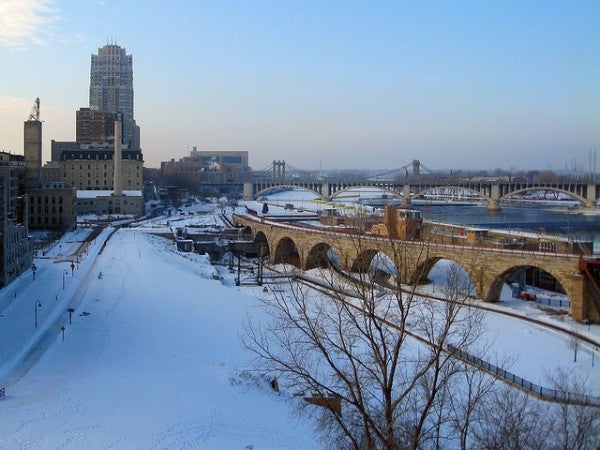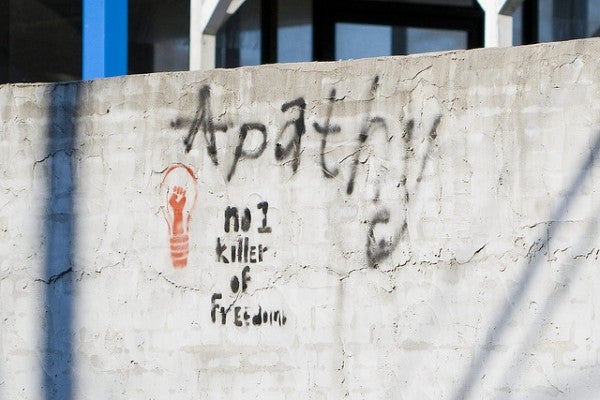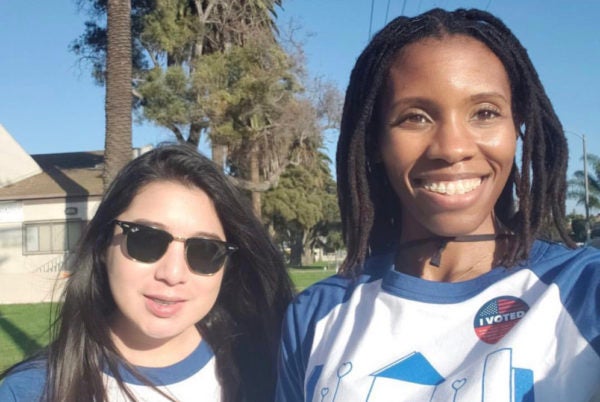
In measures of civil engagement, Minnesota ranks at the top, and California ranks near the bottom. Minnesotans vote, get involved with community organizations, and build up social capital in a way that Californians can only envy. What are Californians lacking–more time? A kick in the rear? In advance of the Zócalo event in Fresno “Is Social Isolation a Threat to Democracy?” we asked several Minnesotans and Californians to weigh in on the question of whether Californians can ever become as civically engaged as Minnesotans.
Maybe–because Minnesota has overcome its own diversity challenges
 From the vantage of the pundit class, the Twin Cities (like Minnesota generally) have little to teach a society in the midst of rapid change. As an Ivy League academic recently said to me, “What does the Twin Cities have to do with the future? More than 50 percent of Americans will be people of color in the year 2050. Minneapolis-St. Paul is white-bread, homogeneous, and staid.” This is a radical misreading of Minnesota’s civic success.
From the vantage of the pundit class, the Twin Cities (like Minnesota generally) have little to teach a society in the midst of rapid change. As an Ivy League academic recently said to me, “What does the Twin Cities have to do with the future? More than 50 percent of Americans will be people of color in the year 2050. Minneapolis-St. Paul is white-bread, homogeneous, and staid.” This is a radical misreading of Minnesota’s civic success.
The immigrants who flooded in during the boom years of the late 19th century, when the population doubled again and again and again each decade, never thought of themselves as “white bread.” Minnesotans were a motley crew of fiercely clannish Swedes, Norwegians, Germans, and Irish Catholics who mingled with Yankees from back East and black refugees from the segregated South. In the 1900 census, 29 percent of Minnesotans were listed as foreign-born; most of the rest had one or two foreign-born parents. In some cases, they came as bitter enemies; in others, they simply were ignorant about one another’s cultures and beliefs.
The key to Minnesota’s civic success is that over time Minnesotans forged what can be called a different kind of politics, one in contrast to the ideological war that consumes the nation today. Minnesota developed a set of civic institutions and public spaces–colleges, schools and businesses, religious networks, trade unions, cultural groups and arts organizations, parks, libraries and nonprofits–where people built relationships and learned to work across differences. These are the foundations of the open, empowering civic culture that makes the state and the Twin Cities first in civic engagement.
Can California forge similar relationships out of its radical diversity? We’ll see.
Harry C. Boyte is the Director of the Center for Democracy and Citizenship at Augsburg College and a Senior Fellow at the Humphrey School of Public Affairs.
————————————-
Yes, if we can regain a little faith in our institutions
 With all due respect to the fine citizens of Minnesota, why should we settle for their example?
With all due respect to the fine citizens of Minnesota, why should we settle for their example?
Californians have a tradition of social, political and even cultural engagement. Whether we arrived in a covered wagon, a Model T, or in the back of a Chevy pick-up, our decision to come to California was an act of civic participation in its purest form: a commitment to pursue a better life. Our history is filled with examples of Californians working and fighting to create what everyone now calls our Dream.
But it’s true that we don’t participate in the electoral process the way we used to. It’s also true that residents of other states get involved in local issues to a greater extent than Californians. But “civic engagement” without a specific goal is an 8th grade social studies assignment. I don’t believe for a second Californians are reluctant to get involved or that we don’t understand the importance of participation. Our challenge is what we’re being asked to get involved with.
Minnesotans vote and volunteer more than the rest of us. Looking at the Minnesota Civic Health Index they invest that energy into a system they apparently have confidence in.
But in California we have lost faith in many of our institutions. Survey after survey shows we don’t trust government–especially our state government. We only modestly trust our local institutions. The City of Bell. Need I say more?
But while Bell provides a vivid example of what can happen when citizens disconnect from local participation, Bell residents are also showing us the way back. They are busy working on getting themselves and their neighbors engaged with their city on critical issues: the budget, public safety and economic development. And they’re going a step further. Grassroots leaders like Nora Saenz are asking themselves and fellow residents, “What do we want our city to be?” Saenz says Bell has a chance to redefine itself beyond simply addressing how to improve local services. It’s a good question for all of us: “What do we want California to be?”
I believe responding to that question is a better start for us in California, rather than worrying about how they do it in Minnesota.
Victor Abalos is an LA-based communications and civic engagement consultant. His clients include California Forward and the National Association of Latino Elected & Appointed Officials (NALEO).
————————————-
Yes, unfortunately, because Minnesota’s catching up to California
 Thanks to Garrison Keillor’s stories from Lake Wobegon, most Californians probably think of Minnesota as a quaint winter wonderland, where ruddy-cheeked Scandinavians organize church suppers and clothing drives. Hardly anyone from outside Minnesota realizes that over the past four decades we have become a much more diverse state in terms of culture, ethnicity, race, and religion.
Thanks to Garrison Keillor’s stories from Lake Wobegon, most Californians probably think of Minnesota as a quaint winter wonderland, where ruddy-cheeked Scandinavians organize church suppers and clothing drives. Hardly anyone from outside Minnesota realizes that over the past four decades we have become a much more diverse state in terms of culture, ethnicity, race, and religion.
In some respects, St. Paul and Minneapolis are becoming more like San Francisco and Los Angeles. Last winter was very warm, and, despite the housing crisis, our suburbs continue to sprawl. While the state overall is still 85 percent white, the non-white population has increased dramatically over the past four decades. A sense of community prevails particularly among less affluent populations, for whom working together to solve problems is not just a courtesy but a matter of necessity. Those Minnesotans carry forward a long tradition of populist and progressive social movements dating back to the 1920s, when an amalgamation of farmers and unionized workers formed what is now the Democratic Farmer Labor (DFL) Party.
But Minnesotans also have a one-percent class that every day seems to embrace more closely the Tea Party and its allies on the religious right. As in California, the uber-rich are white, suburban, and terribly anxious about protecting themselves and their privileges. They seek to shrink the public sector and thus squash civic engagement projects that empower the 99 percent For example, last fall Republican state legislators banded together to slash the budget of the state’s Department of Human Rights, a neutral state agency whose mission includes educating the public to make the state “discrimination free.”
The real question is: What will it take to prevent Minnesota from becoming more like California?
Karín Aguilar-San Juan is an associate professor of American Studies at Macalester College, St. Paul, Minnesota.
*Photo courtesy of the queen of subtle.







